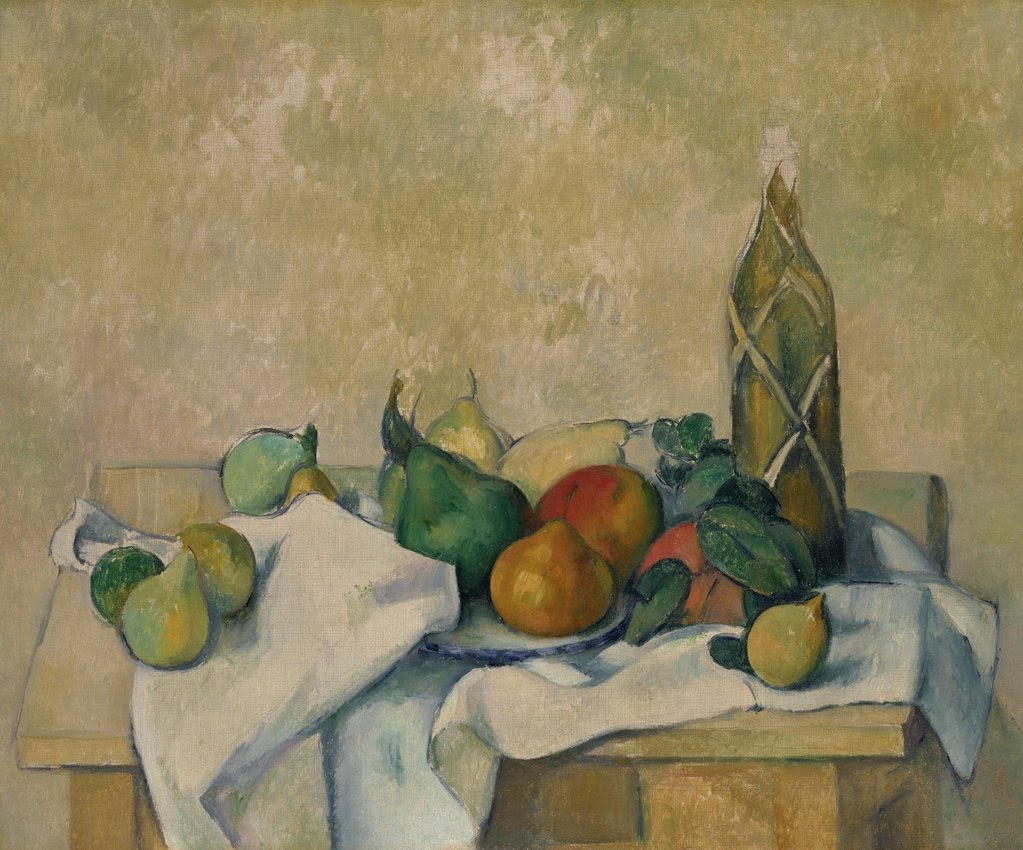Jacques Derrida started deconstruction of art theory in his “La Verita en Peinture” (1978) by saying: “The truth in painting is signed Cezanne…The truth in painting was always something owed. Cezanne promised to pay up: “I owe you the truth in painting and I will tell it to you” (letter to Bernard, 1905)”.
However, there is no deconstruction of Cezanne’s art in Derrida’s book. And is there any way to deconstruct the firm structures of Cezanne’s landscapes and “ancient Egyptian” geometry of his portraits and still lives, that were so different to friable Salon art and to weightlessness of Impressionism?

“May I repeat what I told you here: treat nature by means of cylinder, the sphere, the cone, everything brought into proper perspective, so that each side of an object or a plane is directed towards a central point”, – Cezanne wrote in a letter in 1904 and that sounded like the truth in painting that he promised to tell.
He wrote about the fullness of existence of each object, that reminds me of the slogan of phenomenologist Husserl:”To the things themselves!”

The fullness of existence of objects in Cezanne’s design and the tension, tension of geometry was noted by Picasso: “Cezanne would never have interested me a bit if he had lived and thought as Emile Blanche, even if the apple he painted was ten times more beautiful. What forces our interest- is Cezanne’s anxiety, that’s Cezanne’s lesson”.
This lesson of anxiety and equilibrium was learned by French literature of modernism as well. We “hear” it in Marcel Proust’s descriptions of a still life: “sought to find again in reality, I cherished as though for their poetic beauty, the broken gestures of the knives still lying across one another, the swollen convexity of a discarded napkin into which the sun introduced a patch of yellow velvet, the half empty glass which thus showed to greater advantage the noble sweep of its curved sides and, in the heart of its translucent crystal, clear as frozen daylight, .. the displacement of solid objects, the transmutation of liquids by the effect of light and shade, the shifting colors of the plums which passed from green to blue to golden yellow in the half-plundered dish, the promenade of the antiquated chairs that came twice daily to take their places round the white cloth spread on the table as on an altar at which were celebrated the rites of the palate.. I tried to find beauty there where I had never imagined before that it could exist, in the most ordinary things, in the profundities of “still life.” (“In Search of Lost Time”, 1913-1927).
written by Irina Vernichenko

